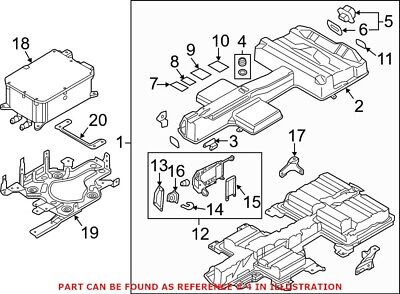When it comes to maintaining your Audi, every detail matters. One often-overlooked component is the OEM battery vent tube. You might be wondering: what exactly does this piece do, and why would you want to remove it? Whether you’re experiencing issues with your car’s battery or just doing some routine maintenance, understanding how to handle the vent tube can make a significant difference in your vehicle’s performance and longevity. Let’s dive into what an OEM battery vent tube is and explore everything you need to know about its removal process for your Audi.
What is an OEM battery vent tube?

An OEM battery vent tube is a crucial component found in many vehicles, including Audis. This specialized tube serves to manage gases that may be produced during the normal operation of a lead-acid battery.
When batteries charge or discharge, they can emit hydrogen gas—a byproduct of chemical reactions inside the cells. The vent tube directs this gas safely away from sensitive areas within the vehicle, preventing potential hazards like explosions or corrosion.
Typically made from durable materials, these tubes are designed to withstand various environmental conditions while ensuring effective ventilation. Their proper installation and maintenance are essential for optimal vehicle performance.
In some cases, especially with AGM (Absorbent Glass Mat) batteries, you might wonder about their necessity. However, even if your battery doesn’t seem to produce significant gases, having a vent system contributes to overall safety and longevity.
Tools and materials needed for the removal process
Removing the OEM battery vent tube from your Audi requires a few essential tools and materials. First, gather a socket wrench set. This will help you easily access bolts that secure the battery.
You’ll also need pliers to grip and detach any clamps holding the vent tube in place. A flathead screwdriver can come in handy for prying off stubborn components.
Don’t forget safety goggles. They protect your eyes from any accidental spills or debris during the removal process.
Having some rags on hand is wise too, as they can help clean up any messes created while working under the hood.
Consider a replacement vent tube if you’re planning to reinstall one afterward. Having everything organized ensures a smoother experience when tackling this task.
The Importance of Battery Maintenance
Battery maintenance is often overlooked, yet it plays a crucial role in the overall performance of your vehicle. A well-maintained battery ensures reliable starts and optimal electrical system operation.
Regular checks can help you identify corrosion on terminals and loose connections before they escalate into larger issues. Keeping your battery clean not only extends its lifespan but also promotes safety while driving.
Additionally, monitoring fluid levels—especially in non-sealed batteries—is essential. Over time, electrolyte levels can drop, leading to potential malfunctions.
Temperature fluctuations can affect battery health too; extreme heat or cold may cause damage that isn’t immediately visible. By routinely inspecting your battery and its vent tube, you’re investing in better fuel efficiency and smoother engine performance down the line.
A proactive approach to maintenance reduces unexpected breakdowns and costly repairs later on. Taking these steps ensures peace of mind every time you hit the road.
Step-by-step guide on removing the OEM battery vent tube from your Audi
Start by ensuring your Audi is parked on a level surface and the ignition is off. Safety first: wear gloves and goggles to protect yourself during the process.
Next, locate the battery in your vehicle. Depending on your Audi model, it may be under the hood or in the trunk. Once you find it, identify where the OEM battery vent tube connects.

Carefully disconnect any cables connected to the battery terminals. Use a wrench to loosen them before removing them completely.
Now focus on the vent tube itself. Look for clips or screws that secure it in place. Gently detach these fasteners without damaging surrounding components.
Once freed, pull out the vent tube slowly but firmly. Inspect for any wear or damage as you remove it from its housing. With this step complete, you’re set for whatever maintenance comes next!
Understanding the OEM Battery Vent Tube in Audi Cars
The OEM battery vent tube in Audi cars plays a crucial role in maintaining safety and efficiency. This component is specifically designed to channel gases produced during the charging process, preventing buildup within the battery compartment.
Understanding its function helps drivers appreciate why it’s necessary for optimal vehicle performance. Without proper ventilation, harmful gases could escape into the cabin or lead to pressure build-up that damages other components.
Typically made from durable materials, these tubes are engineered to withstand various conditions. They ensure that any hydrogen gas created during operation is safely expelled outside of your car.
Being aware of where this vent tube directs gases can also aid in regular maintenance checks. Knowing how and when to inspect it ensures longevity for both your battery and overall vehicle health.
Things to Consider Before Removing the OEM Battery Vent Tube
Before removing the OEM battery vent tube, it’s crucial to evaluate your vehicle’s specifications. Not all Audi models are designed the same way. Consult your owner’s manual for guidance specific to your model.
Consider whether you’re replacing it with a different type of battery. AGM batteries, for example, may not require a vent tube at all. Understanding this can save you time and effort during the process.
Check local regulations regarding battery ventilation systems as well. Some areas have strict guidelines on how car batteries should be managed to ensure safety.
Also, think about potential risks associated with removal. Vent tubes help prevent gas buildup that could lead to dangerous situations if neglected.
Take note of any signs of wear or damage on your current vent tube before making decisions about its removal or replacement. This can inform whether you need an immediate fix or if it can wait.
Common Issues with OEM Battery Vent Tubes and How to Fix Them
OEM battery vent tubes can encounter several common issues that may affect your Audi’s performance. One frequent problem is clogging. Dust and debris can accumulate inside the tube, obstructing airflow. This might lead to increased pressure within the battery.
Another issue is cracks or leaks in the tubing itself. These compromises not only hinder proper ventilation but could also cause harmful gases to escape into your vehicle’s interior.
To fix clogs, gently clean the tube with a soft brush or compressed air. For cracks, consider replacing the entire vent tube rather than attempting repairs; this ensures optimal functionality.
Regularly inspecting these components plays a crucial role in maintaining battery health and vehicle safety. Always stay proactive about any signs of wear and tear for peace of mind on every drive.
Benefits of Regularly Maintaining Your Car’s Battery and Vent Tube
Regular maintenance of your car’s battery and vent tube can significantly extend their lifespan. A well-maintained battery performs better, ensuring reliable starts and consistent power delivery to all electrical components.
The vent tube plays a crucial role in preventing gas buildup during charging. If it’s clogged or damaged, it may lead to pressure build-up that could compromise the battery’s integrity. Regular checks help catch these issues early.
Additionally, clean connections reduce resistance and heat generation, contributing to overall safety. This simple act of upkeep can prevent unexpected breakdowns and costly repairs down the line.
By maintaining both the battery and its ventilation system, you ensure optimal performance under various driving conditions. Plus, this diligence fosters peace of mind on long journeys or daily commutes when reliability is key.
Conclusion
Removing the OEM battery vent tube from your Audi is a task that can enhance your vehicle’s performance. Understanding its purpose and knowing how to handle it properly ensures longevity.
Maintaining the battery and its components isn’t just about efficiency; it’s also about safety. A well-maintained vent tube helps prevent harmful gases from accumulating, ensuring a safer driving experience.
Pay attention to signs of wear or damage on the vent tube. Regular checks can save you time and money in repairs down the line.
If you’re considering this maintenance step, ensure you’re equipped with the right tools and knowledge. Proper execution will lead to better battery health and overall vehicle performance.
Taking action now means safeguarding your Audi for years to come. It’s a simple yet crucial part of responsible car ownership that shouldn’t be overlooked.
FAQ’s
Is a battery vent tube necessary?
Yes a battery vent tube is needed to safely release gases away from the battery to prevent pressure build up and hazards.
What does a breather tube on a battery do?
A breather tube on a battery releases gases produced during charging to prevent pressure build up and safe battery operation.
What happens if a battery is not vented?
Gases will accumulate and cause pressure build up that can cause explosions, leaks or damage to the vehicle.















